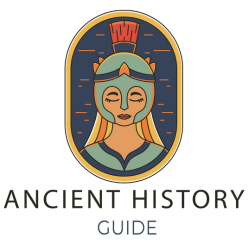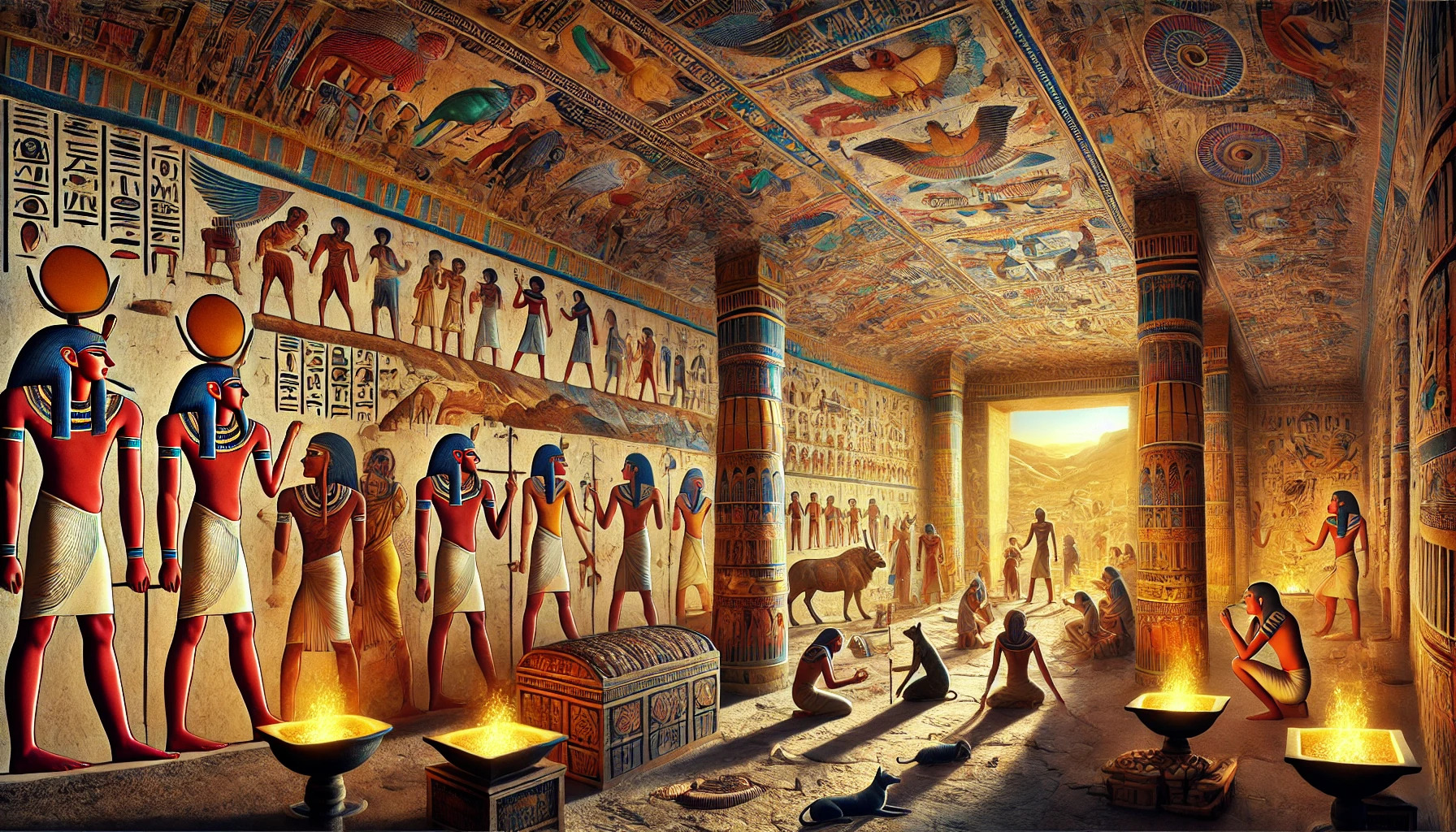Ancient tomb paintings offer a captivating glimpse into the daily lives of the Egyptians who created them. These vibrant artworks, found in burial sites, were crafted to ensure a safe journey to the afterlife. By examining these depictions, one can uncover rich details about everyday activities, social structures, and spiritual beliefs in ancient Egypt.
The scenes illustrated on tomb walls range from festive gatherings to agricultural practices. They provide an idealized view of life in ancient Egypt, showcasing the importance of family, food, and community. Observing these paintings helps modern readers understand the values and traditions that shaped this remarkable civilization.
Each brushstroke tells a story, revealing a culture deeply connected to its customs and beliefs. From preparing food to celebrating harvests, these artworks depict the essence of Egyptian life, making them not just decorations but vital records of history.
The Role of Tomb Paintings in Ancient Egypt
Tomb paintings in Ancient Egypt served a significant purpose beyond mere decoration. They reflected the society’s religious beliefs and symbolism, helping guide the deceased through the afterlife while depicting daily life and the world they once knew.
Religious Beliefs and Afterlife
Ancient Egyptians believed strongly in the afterlife. This belief shaped their funerary practices and the creation of tomb paintings.
These artworks often depicted scenes of daily life, but they also included images of gods and goddesses. This was meant to help the deceased navigate the challenges of the afterlife.
Funerary art, like paintings, was essential for honoring the dead. It ensured a smooth transition into the next world. For the Egyptians, life continued after death, and tomb paintings helped maintain that connection.
Symbolism and Mythology
Symbols played a vital role in tomb paintings. Each element seemed to carry a deeper meaning. For example, the colors used had specific significance.
Blue often represented the Nile and rebirth, while green symbolized fertility. Scenes of harvest or hunting illustrated the joy and abundance of life.
Hieroglyphs also narrated stories and myths, depicting the deceased’s journey. This combination of art and writing reinforced the spiritual significance of the tomb.
By understanding these layers of symbolism, one can see how tomb paintings were not just art but crucial parts of ancient Egyptian culture.
Uncovering the Daily Life of Egyptians
Daily life in ancient Egypt was rich and complex, reflected in the fascinating tomb paintings found in various sites. These artworks reveal insights into occupations, family life, and customs, painting a vivid picture of their society.
Occupations and Social Structure
Egyptians had a diverse range of occupations. The social structure was clear, with the Pharaoh at the top, followed by priests, nobles, scribes, artisans, and farmers.
Priests were vital for religious practices. They performed rituals and managed temples. Scribes were educated and responsible for keeping records, which was important for trade and governance. Artisans created jewelry, furniture, and ceramics, reflecting their skills and the era’s artistic style.
Lastly, farmers worked the land, growing crops like wheat and barley. Their labor supported the economy and sustained the social classes above them. This hierarchy shaped their interactions and community life.
Domestic Activities and Family Life
Family was at the center of daily life in ancient Egypt. Homes were typically simple, made of mud bricks. They had central courtyards for socializing.
Women had important roles, managing the household and raising children. They spun linen and made clothing. Men often assisted with farming or craftsmanship. Children participated in both work and play, learning skills that would help them in adulthood.
Celebrations and family gatherings strengthened bonds. Events often included music, dance, and food, helping create a close-knit community.
Food and Dining Customs
Food was an essential part of Egyptian daily life. The diet mainly consisted of bread, beer, onions, and fish. Wealthier families enjoyed a variety of foods, including meat and fruits.
Meals were often communal. Family members gathered to eat and share stories.
Dining customs included using flat breads as plates and engaging in lively conversations. Special occasions featured more elaborate meals, often with offerings to the gods.
These customs demonstrated their values of hospitality and community, showing how food brought people together.
Artistic Techniques and Materials
Ancient Egyptian tomb paintings showcase impressive artistic skills. The methods and materials used reveal much about their craftsmanship and the significance of these artworks.
Preparation of Walls for Painting
Before beginning their work, artists took great care in preparing the walls of tombs. First, they plastered the surfaces to create a smooth, even texture. This was essential for the longevity of the artwork.
Once the walls were plastered, they might have been coated with a layer of white chalk. This layer acted as a canvas, helping colors to stand out vividly. Artists understood that a good foundation was crucial for their detailed scenes.
Pigments and Color Palette
Egyptian artists used a variety of natural pigments to create their colors. They sourced materials from minerals and plants, ensuring bright, lasting shades. Common pigments included red ochre for red, yellow ochre for yellow, and malachite for green.
The use of black and white was also prominent. Black often represented the richness of the fertile land, while white stood for purity. This careful selection allowed them to convey deeper meanings in their artwork.
Styles and Conventions
The style of tomb paintings followed strict conventions. Figures were typically painted in profile, with heads and legs turned to the side and torsos facing forward. This method allowed for clarity in depicting the human form.
Symbolism played a vital role in their artwork. Gods and everyday life were often intertwined, conveying the connection between the living and the afterlife. Artists also adhered to specific color meanings, ensuring their work aligned with cultural beliefs.
Significant Tombs with Notable Artwork
Ancient Egyptian tombs are treasures of art and history. They showcase daily life and significant cultural beliefs through their vibrant paintings. Here are three notable tombs filled with remarkable artwork.
Tomb of Nebamun
The Tomb of Nebamun, located in Thebes, features stunning wall paintings that capture the vibrancy of everyday life. Nebamun was a middle-ranking official, and his tomb artwork reflects his status.
The paintings depict scenes of hunting and feasting. They show Nebamun with his family enjoying leisure activities like fishing and dancing. These vibrant images provide a glimpse into the enjoyment and abundance of life in ancient Egypt.
Tomb of Nefertari
The Tomb of Nefertari is considered one of the most beautiful in Egypt. It belongs to Nefertari, the wife of Pharaoh Ramses II. Inside, the walls are adorned with intricate and colorful paintings that illustrate themes of love and reverence.
The artwork includes depictions of Nefertari engaging with gods and goddesses. These images highlight her importance and the belief in the afterlife. Rich blues and golds create a stunning atmosphere, emphasizing the skill of ancient Egyptian artisans.
Tomb of Tutankhamun
The Tomb of Tutankhamun, discovered by Howard Carter in 1922, is famous for its remarkable treasures and artworks. The paintings inside tell the story of Tutankhamun’s life and his divine connection.
One notable scene depicts the young pharaoh hunting in the Nile. The artwork symbolizes power and mastery over nature. The tomb is a crucial source of information about royal life and beliefs in ancient Egypt, showcasing the artistic talent of the time.
Interpreting Hieroglyphs in Tomb Art
Hieroglyphs in ancient Egyptian tomb art serve as a fascinating way to connect with the past. These symbols not only tell stories but also provide important insights into daily life and beliefs.
Deciphering Symbols and Text
Ancient Egyptians used hieroglyphs to communicate messages in their tomb paintings. Each symbol, or glyph, carried a specific meaning, which could be phonetic or ideographic. For example, the glyph for water might represent life and fertility.
To interpret these symbols, scholars often compare them against known texts. Understanding context is crucial, as a symbol’s meaning can change depending on its placement. This careful analysis helps uncover details about rituals, social roles, and the afterlife beliefs of ancient Egyptians.
The Role of Hieroglyphs in Narration
Hieroglyphs play a key role in storytelling within tomb art. They guide viewers through scenes, creating a narrative that illustrates important events or themes. For instance, a scene showing a banquet might convey ideas about feasting in the afterlife.
Each figure and symbol complements the visual elements, enhancing the overall message. Such detailed depictions not only celebrate the deceased but also reflect their status and aspirations. Through hieroglyphs, viewers gain better knowledge of ancient Egyptian culture and values.
Preservation and Conservation Challenges
Ancient tomb paintings face numerous challenges that can threaten their existence. Environmental factors and restoration techniques play a significant role in determining how well these artworks survive over time.
Environmental Threats
Tomb paintings are highly sensitive to environmental factors. Humidity is a major concern, as it can cause mold and deterioration. Additionally, temperature fluctuations can lead to cracking and flaking of the paint.
Dust and pollution also pose risks. Particles can settle on the surface, making it difficult to see details. Light exposure can fade colors, especially in tombs that see a lot of tourist traffic. Protecting these ancient artworks requires careful monitoring and specific environmental controls.
Restoration Efforts and Techniques
Efforts to restore tomb paintings focus on preserving their integrity. Experts often use a combination of techniques. Cleaning is performed delicately, using soft brushes to remove dust without damaging the paint.
Chemicals can sometimes be applied to stabilize the artwork, but these must be chosen carefully. Innovations like digital imaging help in documenting the original state before restoration. Techniques such as micro-abrasion and consolidation ensure that restorers can repair damage while keeping the original material intact.
Continued research and investment in conservation techniques remain crucial in safeguarding these historical treasures for future generations.
The Impact on Modern Understanding of Ancient Civilizations
Ancient tomb paintings offer valuable insights into the daily lives of Egyptians, influencing both contemporary art and education. They help bridge the gap between ancient practices and modern interpretations, enhancing understanding of past civilizations.
Influences on Contemporary Art and Architecture
The designs in ancient tomb paintings continue to inspire artists today. Modern artists often draw from the vivid colors and symbolic representations found in these works.
Architects also look back to these ancient designs when creating buildings. The use of hieroglyphs and the arrangement of space in Egyptian tombs can be seen in some modern structures. These influences provide depth to how contemporary creators envision and execute their work.
Educational Importance
Studying tomb paintings plays a key role in education about ancient Egypt. They serve as primary resources that historians and students use to learn about Egyptian culture.
Classes often focus on the themes depicted in these paintings, such as food, family, and daily tasks. This helps students connect with the past in a more engaging manner.
By analyzing the artwork, they can gather information on social structures, beliefs, and practices. In this way, tomb paintings act as both artistic expressions and educational tools, enriching the understanding of ancient societies.

